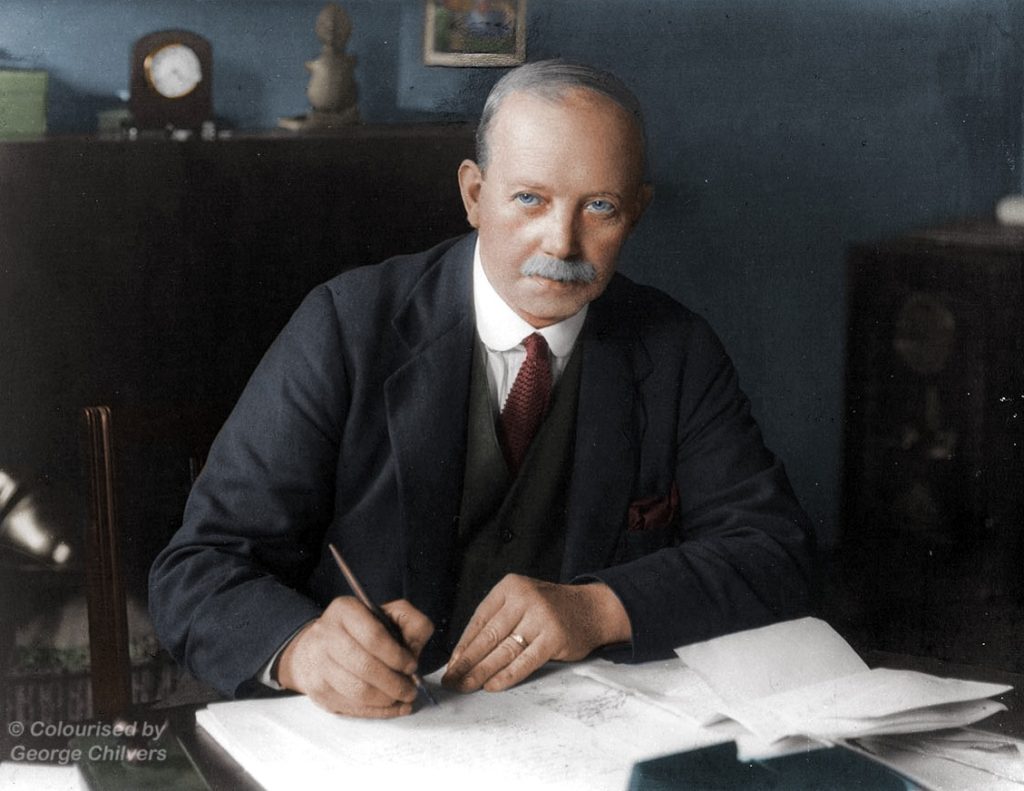
AN INTERVIEW WITH GEORGE CHILVERS
by Richie Gillham
Richie Gillham:
Thanks for joining us, George. I think many of us have seen and admired your colourisations of old black and white football pictures. So, from the beginning, how did it start?
George Chilvers:
I was born and grew up in Liverpool in the 50s and 60s, and as a little lad I loved reading about football. I used to get football annuals at Christmas, and very rarely if I had saved up enough I’d buy a magazine, like Charles Buchan’s Football Monthly. I became obsessed with what colours teams wore, and could recite every team in the Football League and Scottish League, and some foreign teams. This was in the days way before every piece of information in the world was on tap online. I scoured articles for a little phrase like “.. in their blue shirts” that would unlock the problem.
I used to look at the pictures in my annuals (all in black and white of course), wonder what they would look like in colour, and get my coloured pens and pencils and colour them in.
Scroll forward many many years. Even as an adult I had literally ‘toyed’ with painting models of Napoleonic soldiers, adding colour to a blank canvas in other words to see what they would look like, but as computers became more prevalent I became interested in them I had a Spectrum first and then an Amiga before a PC.
I obtained (don’t ask from where) a copy of Photoshop 5 and my world changed. Because I learned how to add colour to old pictures. My first picture, about 20 years ago, was of a WW1 soldier, a sort of vague relative who sadly died aged 20 just before the end of the war. It was a simple colourisation: just a blue back wall, khaki uniform, brass buttons and skin tone, but suddenly he came alive, and I was hooked.
What’s the process? What does it involve?

Do you remember when you were little (well, maybe if you are of a certain age you’ll remember) watching black and white TV through a coloured sweet wrapper? You’d marvel at how grass looked green – even though faces were also green. Or similarly with red wrappers, where faces would look quite good, even though the sky was red too.
What I do in colourising is effectively put down layers of coloured transparent sweet wrapper. But instead of covering the whole picture I digitally trim the wrapper. So for example for an Everton player, I’ll select an area such as the shirt, and alter the colour of it to blue.
Then I’ll go on and select perhaps the skin area, and alter that to be a skin hue. And so on.
Obviously that’s an over-simplification but it’s the basic idea. Layer upon layer of digital transparent colours.

But unlike that first picture of my whatever-cousin-so many times removed, I now have more layers. Skin, for example is not just pink, but has shades of red, yellow and blue. The skin tones of foreground players are bright and clear, the crowd in the distance is much duller and subdued,
A recent picture I have just completed had 28 different layers, all having to be blended in together, toned down or brightened up to match the lighting in the picture, the weather, the mood or whatever. The edges of the wrappers being sharp knife edges, or fuzzy blurs. That’s the hard part. I could teach someone the actual mechanics of putting colour down digitally, it takes a lot of experience and practice to blend it all together.
That sounds a long process. How long does a picture take?
My standard answer involves pieces of string. Very hard to say and a lot depends on the complexity of the picture, whether any repair work needs to be done and so on.
A very, very simple image of a head and shoulders shot with little complication can take a morning or an afternoon, but others can take ages. Add to that that I very rarely do a picture in one sitting. I’ll do parts of it, and then either because my wrist aches or my eyes need a rest, or I’ve just got plain bored by the same picture, I will leave off and come back to it the following day, or week, or sometimes never. I have a raft of pictures half started that haven’t quite generated the buzz to get them finished. Sometimes they just don’t work. Sometimes I get side tracked with a different project.
So a picture can take from a couple of hours to eternity. Some colourisers, and I use the term loosely, say they can do a picture in half an hour. It shows. And don’t get me started on the abominations that are generated with AI websites – ‘one click to colourise’. I once, for a trial, ran a picture of Dixie through one to see how it would turn out. He ended up with a red shirt with no way you can change it.
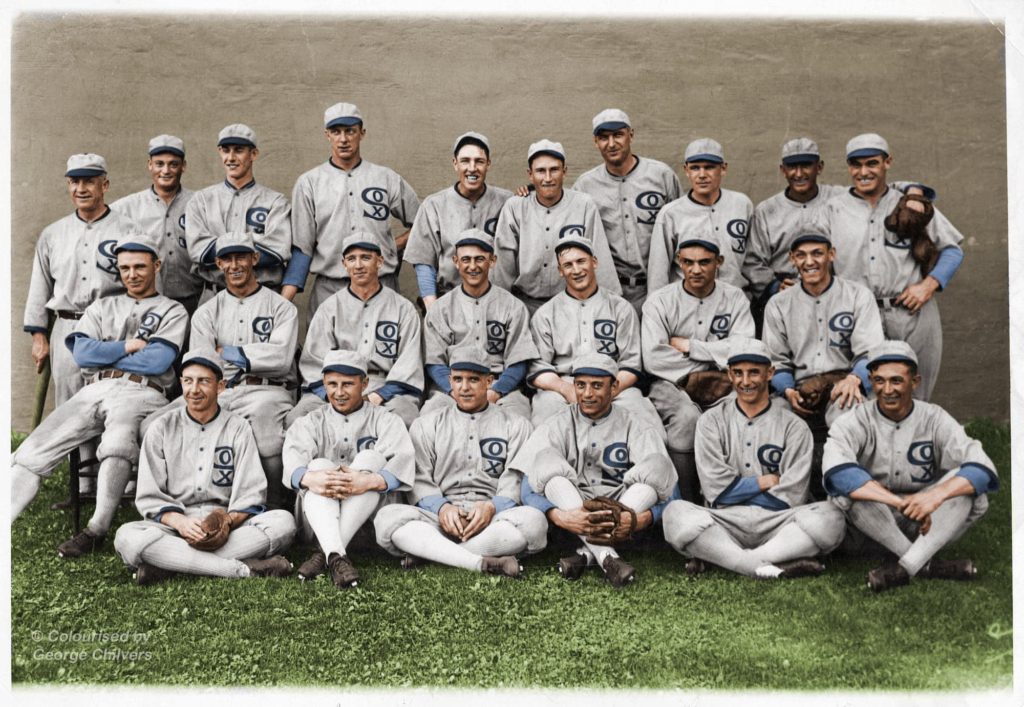
You say you started with Photoshop 5. I presume you’ve moved on from that?
Only just about. I upgraded to PS7 once and then a number of years back started using Photoshop Elements 9. I still use that even though there have been a number of upgrades since. It does exactly what I want, so why change?
How do you know what colours to use?
Research, research, research. For kit colours usually it is fairly straightforward, and there are a few good reference sites online. They will help out, but sometimes it’s obscure. I recently did Lincoln away at Wigan in the early 80s, and they didn’t have their normal stripes but a plain shirt. I Googled Lincoln City 1981 and came up with an image of a green Lincoln City shirt of the era for sale, exactly matching the black and white image.
As I mentioned, old newspaper articles sometimes give the key and some surprises. In the 1950 FA Cup Final Liverpool wore blue and white socks, not red and white as people tend to think; Dynamo Moscow on their tour in 1945 added olive green socks to their all blue kits. Little anomalies tend to be mentioned, and they are like gold dust and put a smile on my face for the rest of the day. I have become an expert on the vagaries of goalkeeper colours in the early 20th century, and could probably answer questions on Mastermind on the subject.

(Derek Temple Back row second from the left)
The other big things to identify are ground adverts. Again Google is my friend – people collect vintage beer mats, or cigarette adverts, or similar and they give the colour. Collectors of model buses or trains often have contemporary adverts in colour. You can find old match clips in colour that may have a couple of adverts that are relevant still up from years previously, and from them you can make a good guess at the missing ones.
There are also a few old colour photos of grounds. I am doing a regular feature in Wigan’s programmes this season, and with the help of a few pictures people took at the time I have now pretty well pieced together the different adverts around the ground over a number of years.
And finally crowd clothing. It’s obviously impossible to say definitely that ‘that man over there has a brown coat’, but you can make educated guesses, and there are a lot of online sites that focus on retro clothing, so I can at least build a pallet of colours that are contemporary. And that’s not to mention that I will unashamedly use the research done for programmes like Peaky Blinders or Downton Abbey or similar, to ascertain what colour clothing was en vogue.
People often ask if a black and white image contains some sort of hidden information as to what colour was there. The answer is no, there is no secret encoded information, but I think I can now make a good guess at most, but there are huge pitfalls that lie in wait, as old film emulsions reacted differently than modern ones do.
I am sure you have seen early Everton v Liverpool pictures, with Everton in seemingly light grey shirts and Liverpool in dark almost black jerseys. Because of the way the emulsions reacted to the light the colours are not sky blue and maroon, but pretty much the same royal blue and red as now. Experience can help me – even though it didn’t help Arsenal in 2005 when they brought out retro “redcurrant” shirts in the belief from old pictures that the original colours had been a dark red. They weren’t, they were just an ordinary red, and those in the know had a good laugh.
Where has your work been used?
I now tend to do colourisations that I want to do. I am long retired and just don’t want it to become a job, so I do it for fun. That way I can do or not do things asked of me without feeling I am losing out.

But of course, you at Everton Heritage have a fair bit of my work, and I’ve done pictures recently for an equivalent Derby County heritage group, and just before Christmas completed a couple of years work on a book dealing with the rivalry between the two Bradford clubs (blatant plug: Wool City Rivals by George Chilvers and John Dewhirst, available at https://bantamspast.net/our-latest-book/ )
My pictures have appeared in programmes at Everton, Arsenal, Charlton, bizarrely Worcester, and I have a regular feature in Wigan Athletic’s programmes. I have also produced book covers for books about Everton, Liverpool, Burnley, Newcastle and Bristol Rovers, and there are a few in the pipeline.
I post my pictures regularly on Facebook and Twitter (I have a FB page https://www.facebook.com/Garswoodlatic ) and I also did some pictures for a Russian sports site.
Many thanks for that insight, George, but I do have to ask one final question. You are scouse born and bred – so where does Wigan come into it?
I was indeed born and raised in Liverpool, and (whisper it) followed the red side – I had a Kop season ticket and travelled a few times abroad. But when I got married in the mid 70s we moved out to Wigan. Not a million miles away of course, but as we raised a family of our own getting to matches became almost impossible, and I had a long hiatus from going to matches, spending Saturday afternoons taking the family for tea at their grandparents instead.
But when my son came to an age to watch football going to Liverpool was difficult, but we had a League club on our doorstep, so we started watching them. He then started to sell programmes, my daughter came along as a ball girl, and I stewarded both at Springfield Park and the newly built JJB.
Wigan and Liverpool’s universes were never supposed to collide but when Wigan got in the PL they did.
So, do I suddenly switch allegiance back to a team that I hadn’t watched for 25 years and which frankly didn’t exist in the same form as I used to follow (Bill Shankly mentality, English and Scottish players, ordinary scousers stood next to you on the Kop)? It’s not a particular criticism of LFC, but of football in general. There was no conflict – what I had supported was gone.
But I had followed my team, Wigan, over the intervening years, and so I found myself outside the Anfield Road end, with a blue and white scarf.
And following Wigan gave me my biggest football thrill ever with the FA Cup win. And huge sorrow now at the mess we are in through no fault of our own.
So – that’s how I became a Latic, Garswoodlatic.
GALLERY
(not for publication, all copyright George Chilvers)
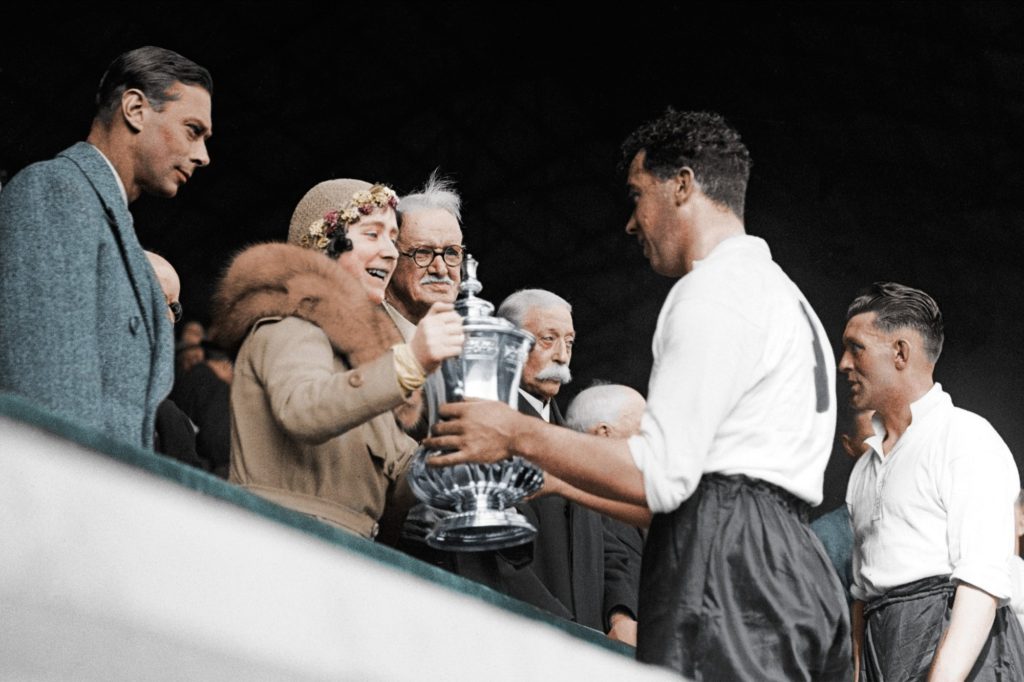

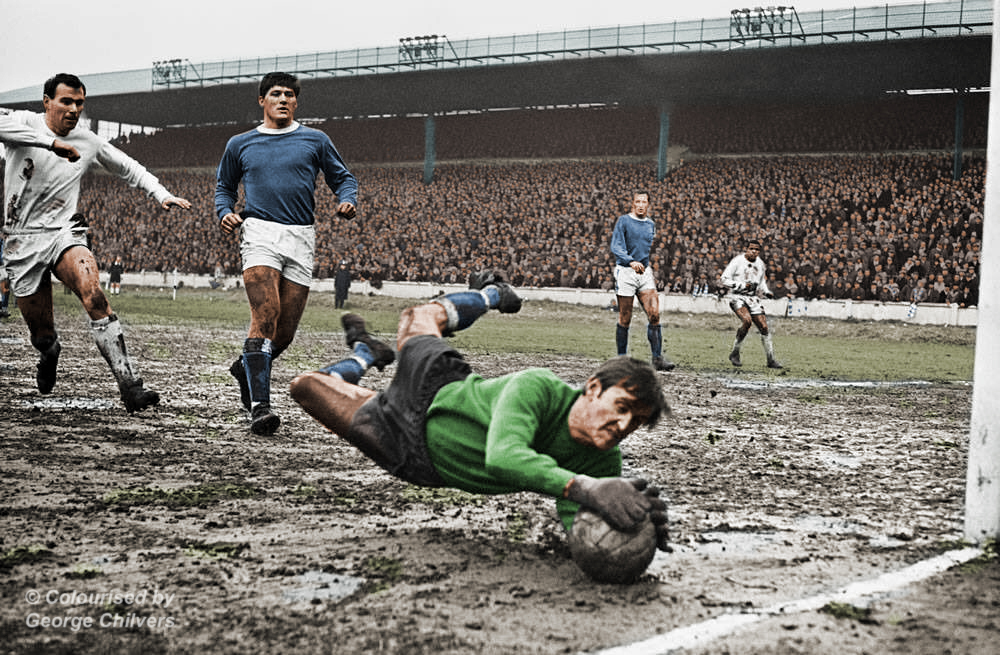
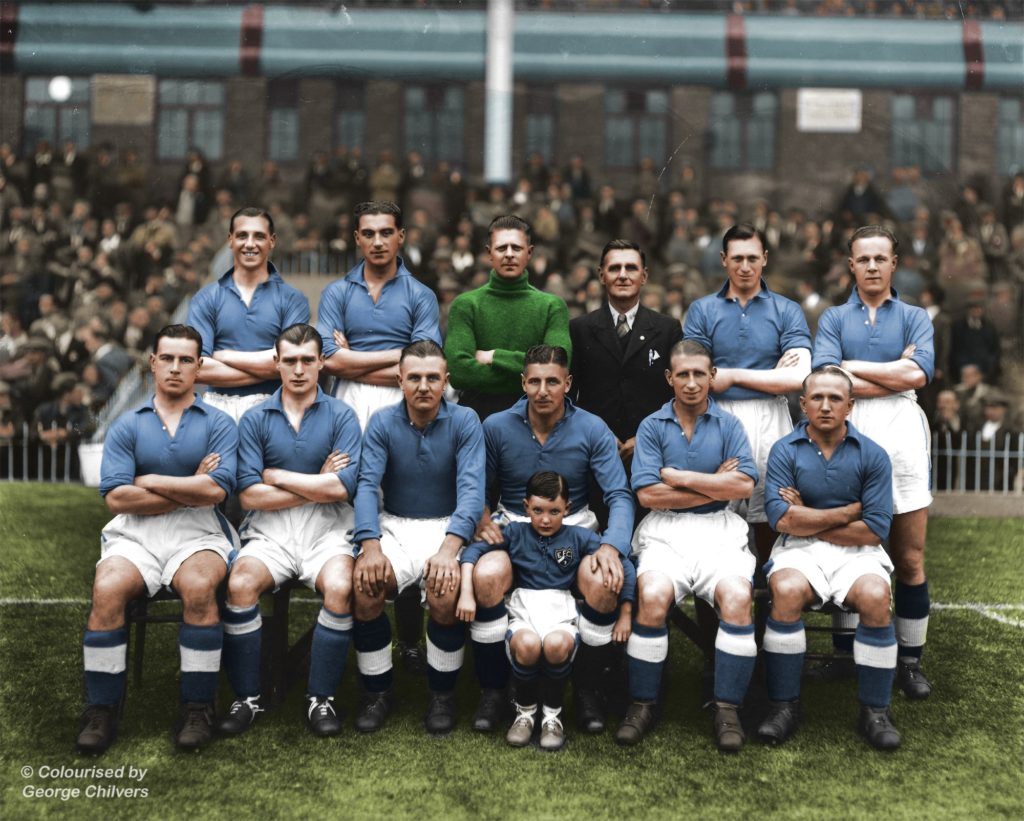
Back row L-R; Lawton, T.G.Jones, Sagar, Cook (Trainer), Mercer, Greenhalgh; Front; W.Cook, Gillick, Bentham, Thompson, Stevenson, Boyes






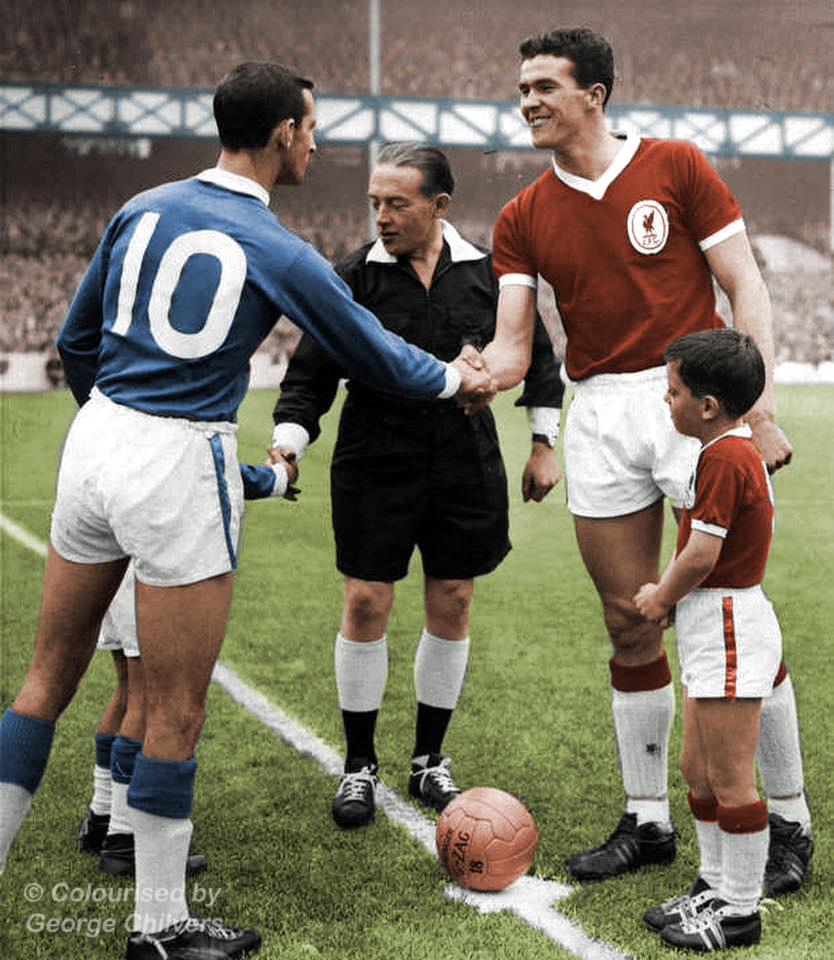

Teddy Glover ex Everton reserve back row last player on th right


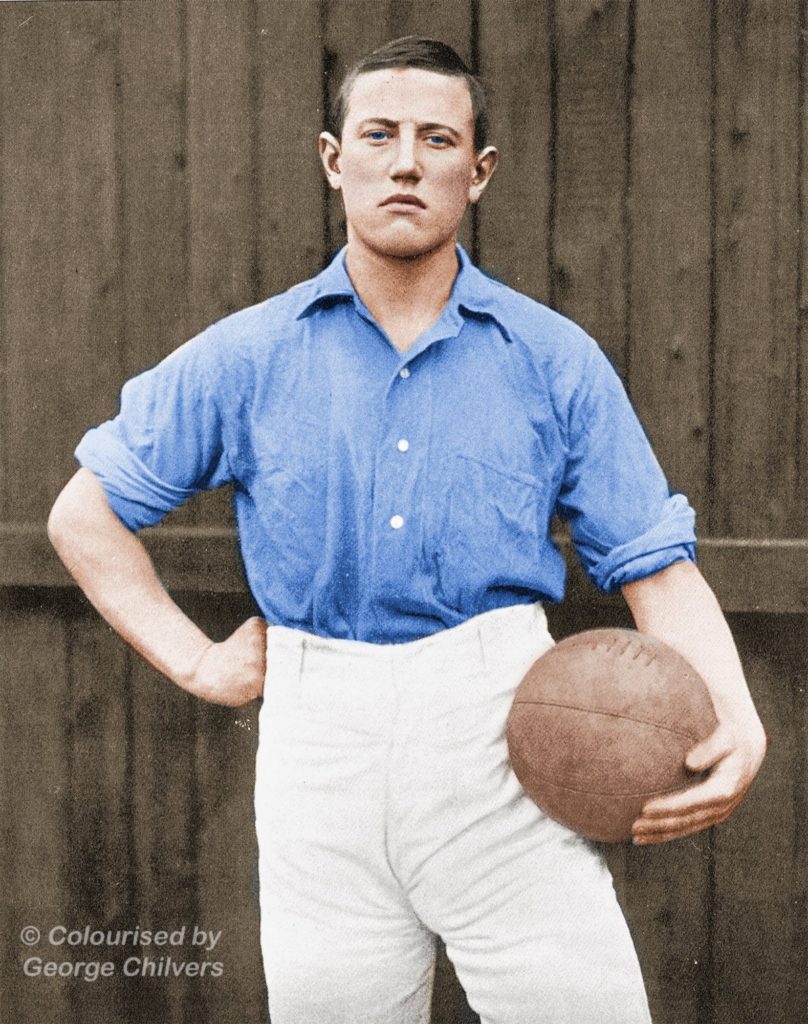





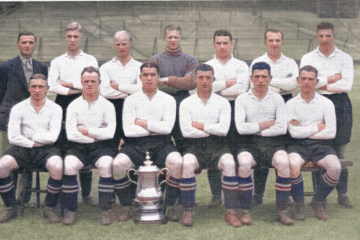
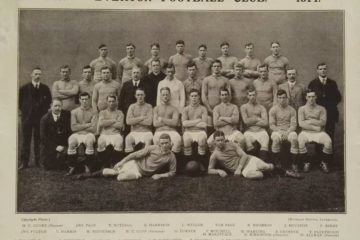

I loved reading this and it’s fabulous to see many pics I’ve seen before in black and white coming to life in colour. Particularly liked the pics taken at Springfield Park, I rememberthe Rathbones ad on the main stand and the grass bank away end
Thanks for that.
Does anyone know where the picture of the 1930s players with Dixie in center was taken exactly i.e. is that the old Main Stand looking from Neston St, or is it something else in the background?
Dixie Dean (centre), stepping out with his team mates near Goodison ahead of the 1930-31 season. L_R: George Martin, Tommy White, Billy Coggins, Tom Griffiths.